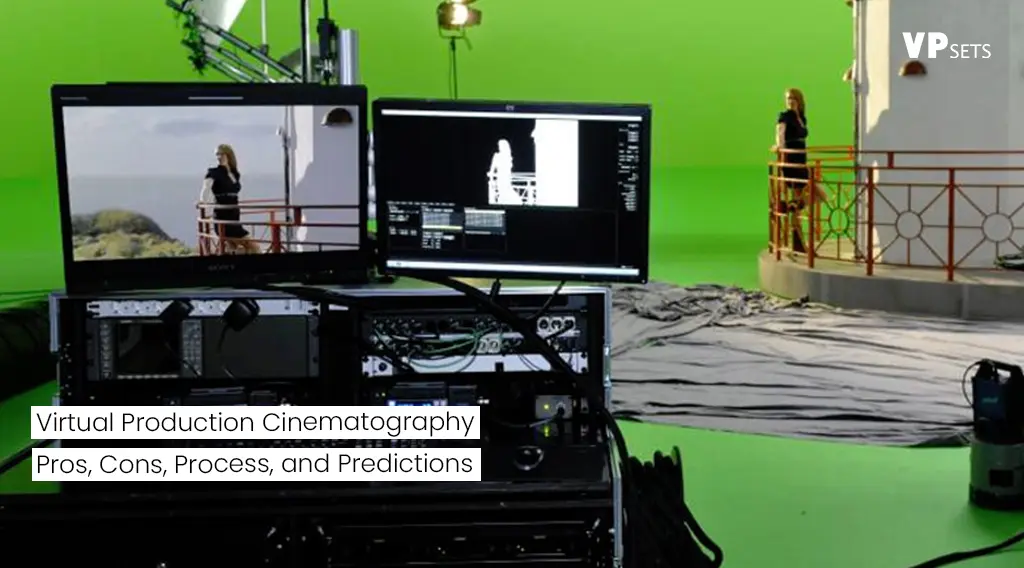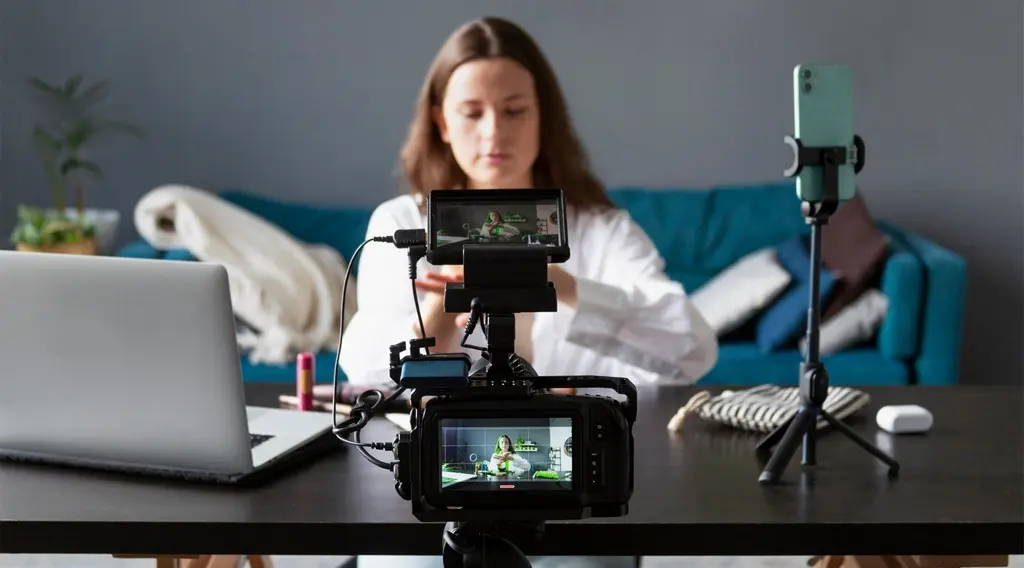Virtual Production Cinematography: Pros, Cons, Process, and Predictions

Innovate and Inspire: VP Sets Brings You World-Class Virtual Production Assets
Imagine filming a scene on a spaceship soaring through the cosmos, all within a soundstage. Or picture yourself exploring a bustling alien city without ever leaving the studio. That's the magic of Virtual Production (VP) cinematography, a filmmaking technique that's revolutionizing the way movies and TV shows are made. But what exactly is it, and is it all sunshine and rainbows? Let's dive in!
What is Virtual Production Cinematography?
Virtual Production cinematography combines live-action filming with computer-generated (CG) environments displayed in real-time. Instead of relying on traditional sets or green screens, VP surrounds actors with LED walls or projects virtual worlds directly onto their surroundings. Imagine a giant, high-resolution TV displaying your fantastical world, reacting to camera movement and lighting changes. Pretty cool, right?
The Allure of Virtual Production: Pros
So, why is the VP creating a buzz in the filmmaking world? Let's explore some of its biggest advantages:
Creative Freedom Unleashed:
VP breaks down
location barriers. Need a scene set on the moon? No problem! Gone are the days of expensive location scouting and
permits. With VP, your imagination is the only limit.
Real-time Collaboration:
Imagine seeing the
final scene with virtual elements right there on set, not weeks later in post-production. VP allows directors,
cinematographers, and VFX artists to collaborate seamlessly, making adjustments on the fly.
Lighting Like a Dream:
Virtual environments
come pre-lit, eliminating the need for complex lighting setups. This translates to faster shooting times and a more
natural look for actors.
Cost-Effectiveness:
Building elaborate sets can
be a budget nightmare. Virtual Production eliminates that cost, and the flexibility of virtual locations can save
on travel expenses too.
But Hold On, There's a Catch: Cons of Virtual Production
While VP offers amazing possibilities, it's not without its challenges:

Tech Talk:
The VP requires a significant investment in specialized equipment and software. Setting
up and operating this technology demands a skilled crew with a whole new skill set.
The Learning Curve:
Traditional filmmaking
workflows need a revamp for VP. Pre-production takes on a new role, with detailed virtual world creation happening
well before filming starts.
Limited Movement:
Large LED walls can
restrict camera movement, especially for Steadicam or handheld shots.
Not for Everything:
While VP excels in sci-fi
and fantasy, it might not be the best fit for every project. A period drama might benefit more from the authenticity
of a real location.
So You Want to Try Virtual Production? Here's the Process
Intrigued by the VP? Here's a simplified breakdown of the process:
1. Pre-Production Powerhouse:
This is where the magic happens. Concept art, 3D modelling,
and virtual environment creation take centre stage.
2. Setting the Stage (Virtually):
The LED wall or projection system is set up, and the virtual
world is calibrated for lighting and camera movement.
3. Lights, Camera, Action (with a Virtual Twist):
Filming commences! The virtual environment
reacts to the actors and camera in real time.
4. Post-Production Polish:
While VP saves time, some VFX work might still be needed to refine
the final product.
The Future of Filmmaking: Predictions for Virtual Production
Virtual Production cinematography is still evolving, but its potential is undeniable. Here's what we might see in the coming years:
More Affordable Technology:
As VP becomes more mainstream, expect advancements that make the technology
more accessible to smaller productions.
The Rise of The Volume:
Imagine dedicated Virtual Production studios with permanent LED wall setups, like
giant versions of today's soundstages.
A Hybrid Approach:
VP will likely complement traditional filmmaking, not replace it entirely. The perfect blend
of real-world locations and virtual elements could become the norm.
So, is Virtual Production the Future?
Only time will tell the full story, but the VP is undoubtedly changing the filmmaking landscape. It offers a treasure trove of creative possibilities, streamlined workflows, and cost-saving benefits. As technology advances and the learning curve smooths out, VP has the potential to become a powerful tool in the hands of storytellers everywhere.
What do you think? Are you excited about the possibilities of Virtual Production cinematography? Share your thoughts in the comments below!
